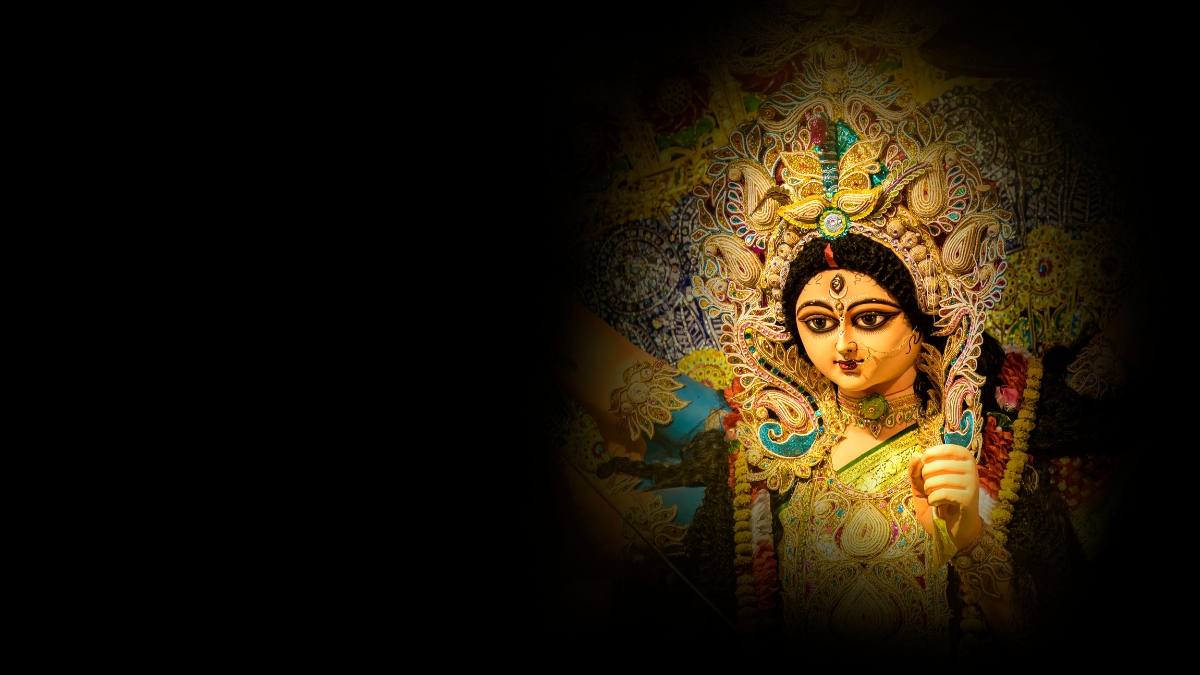It’s that time of the year when Navratri will be celebrated in many ways with great zeal all over India. Navratri, symbolising victory of positivity over negativity, literally means “Nine nights”. In Sanskrit, Nav means Nine, and Ratri means nights. During these nine nights and 10 days, the three forms of the Divine Mother are invoked: Durga, Lakshmi, Saraswati. The significance of each day of Navratri is attached to a form of the Mother Divine.
“Yaa Devi Sarva Bhutessu Maatr Rupenna Samsthitaa,
Namas Tasyai Namas Tasyai Namas Tasyai Namo Namah.
To that Devi Who in All Beings is Abiding in the Form of Mother,
Salutations to Her, Salutations to Her, Salutations to Her, Salutations again and again.”
The main element of Navratri in India, however, is that people engage in celebration of the triumph of good over evil. It is a festival that brings people together and promotes harmony.
In the east and northeast of India, the goddess is celebrated as Durga, the vanquisher of the evil demon Mahishasura and the festival is called Durga Puja. During this time, women deck up in colours of white and red, and the cities are decorated with lights. People enjoy the inception of the festival from the day of Mahalaya to the day of Bijoya Dashami, when the idols are immersed in water.
In Western India, especially in Gujarat, Navratri is one of the main festivals. People assemble in large gatherings to perform the popular Garba dance. Gujarat perhaps, is the only state in India that erupts into a grand nine-night dance festival.
In Mysore, Karnataka, the festival is popularly known as Dussehra and is celebrated royally that includes regal processions, torch light parades and musical events. The history of Mysore Dussehra goes back to the 15th century when Raja Wodeyar started these ten days celebrations. There is also a legend that says it was Goddess Chamundeshwari of the Chamundi Hill who killed a buffalo-headed monster called Mahishasura and restored the victory of truth over evil.
In UP and Bihar, Navaratri is celebrated in the form of Ramleela which literally means “Rama’s play”, when people perform series of scenes from the Ramayana. And on the 10th day, the festival is celebrated as Dussehra, marking the victory of Rama over Ravana.
As far as Southern India is concerned, one of the main attractions during Navratri is the Kolu / Golu – which is primarily the exhibition of various dolls and figurines placed in a decorative form in many homes. This festival comes with various names across the Southern states of India. In Karnataka, kolu is referred to as Bombe Habba, while in Tamil Nadu it is called Bommai Kolu. Kerala refers to it as Bomma Gullu, while in Andhra Pradesh it is called Bommala Koluvu.
In Tamil Nadu, the 9 days of Navratri are wholly dedicated to worship of the feminine in various ways. The first three days are dedicated to Durga (the destroyer of impurities), the next three are for Lakshmi (the one who bestows spiritual wealth), and the last three days are devoted to Saraswati (the goddess of wisdom and knowledge). Books and musical instruments are offered to the Goddess on the ninth day which is celebrated as Saraswati Puja. Ayudha Pujais also performed on this day when all the implements, tools and vehicles are worshiped as an offering of thanksgiving.
On the tenth day, all the Golu dolls are packed and stored away only to be used for the next year’s celebration. In Chennai, where I come from, Navratri is celebrated with display of dolls/ figurines arranged on tiers in odd numbers. Mango leaf festoons would be installed on doors, windows and pooja rooms. Fresh kolams (rangolis) would be drawn every day. In years gone by, small boys and girls dressed especially for the occasion would go to their neighbours’ houses to invite them for the festival. My neighbours kids would come over to invite us to their place, dressed as Krishna, Rama or Sita. I, as a child always looked forward to go see Golus in different houses in our neighbourhood.
For me the Golu festival was all about : a) listening, b) admiring and c) enjoying.
a) listening to young girls and women of the household sing bhajans. If one was well-versed with singing devotional songs, it was the right time and place to display one’s talent.
b) admiring the awesome display of dolls, both mythological and pretty handmade ones with beautiful colourful costumes.
c) above all, enjoying the tasty offerings. Almost every household had Chickpea sundal, thengai/mangai/pattaani sundal to offer on different days of the nine day festival. By sundal I mean steamed chickpea served with coconut, raw mango and a seasoning of few coarsely ground spices. It always tasted yum. Simple yet tasty. Yes, the ladies in particular were ever enthusiastic to show their talents.in the fields of decoration, doll making, cooking, singing, etc., irrespective of the status they enjoyed in their lives, professionally or otherwise. Every lady I knew was one better than the other….they were all the talented lot.
Interestingly, during my days in Japan, I was pleasantly surprised to learn about “Hinamatsuri” which is celebrated on 3rd March every year to pray for the health and well being of young girls. Also called “Doll’s Day” or “Girl’s Day” beautiful dolls are arranged on tiers in odd numbers (talk about similarities of sorts). There is also a Hinamatsuri song called “Ureshi Hinamatsuri” meaning Happy Hinamatsuri. And like our sundal prasadams, the customary Japanese drink for the occasion is shirozake, a sake made from fermented rice. Such unforgettable memories.
This year Navratri festival was observed from 15th to 24th of October, celebrating the victory of good over evil, not just spiritually… but within us as well. Happy Navratri.
SUDHA MUKHOPADHYAY
